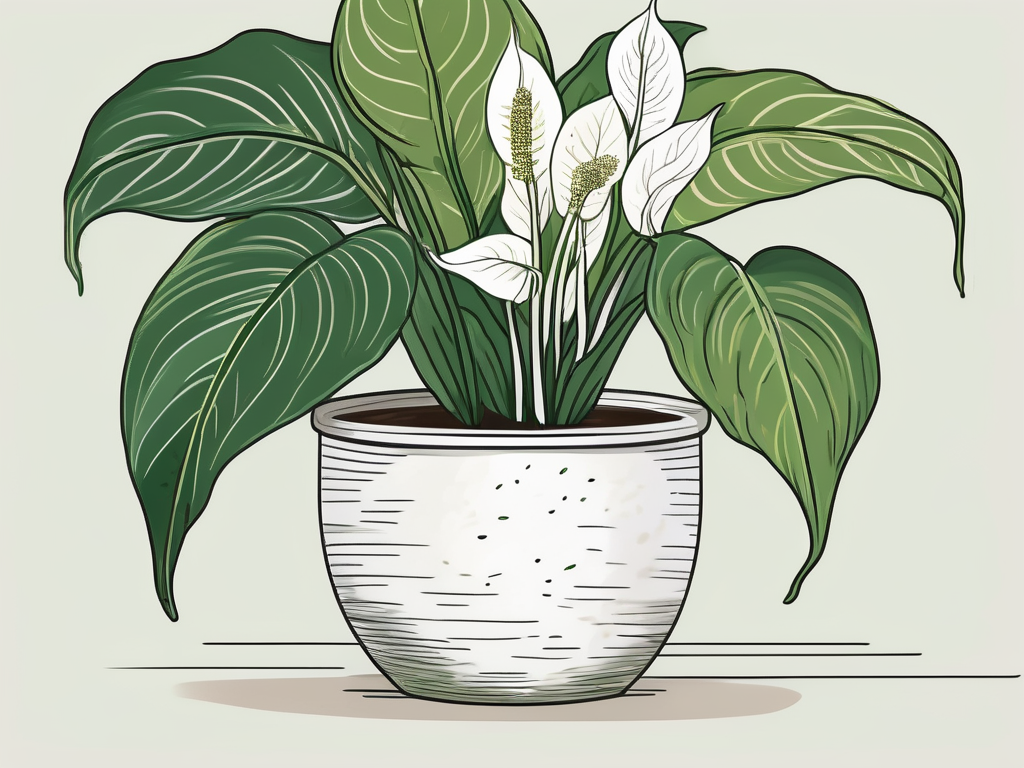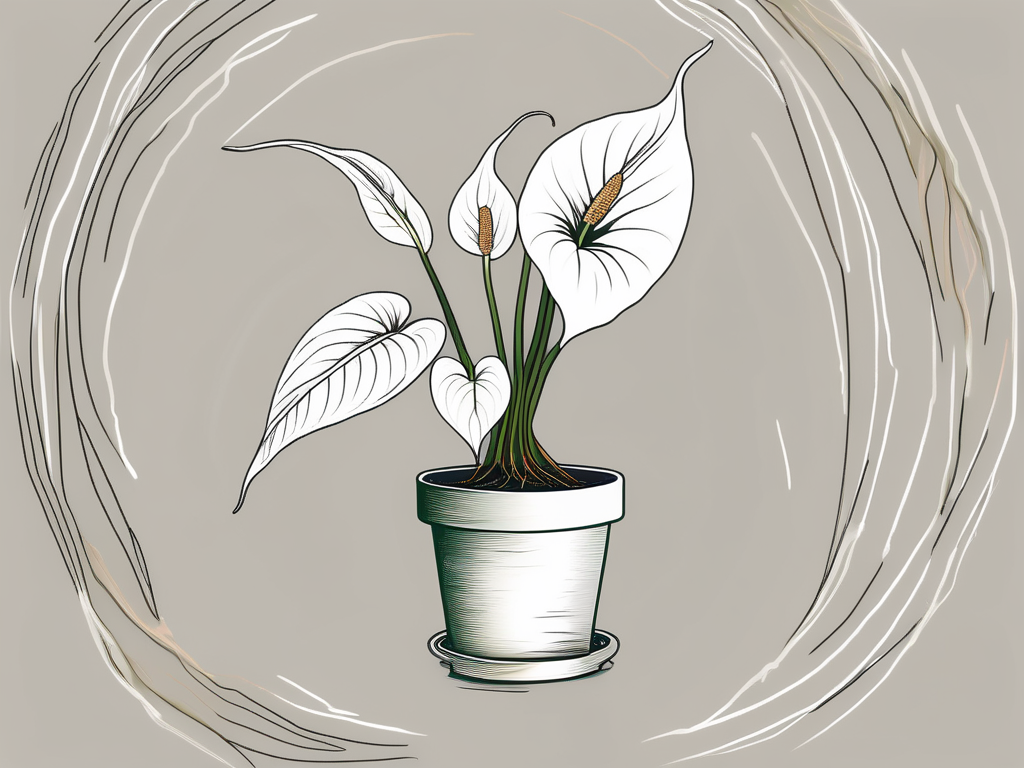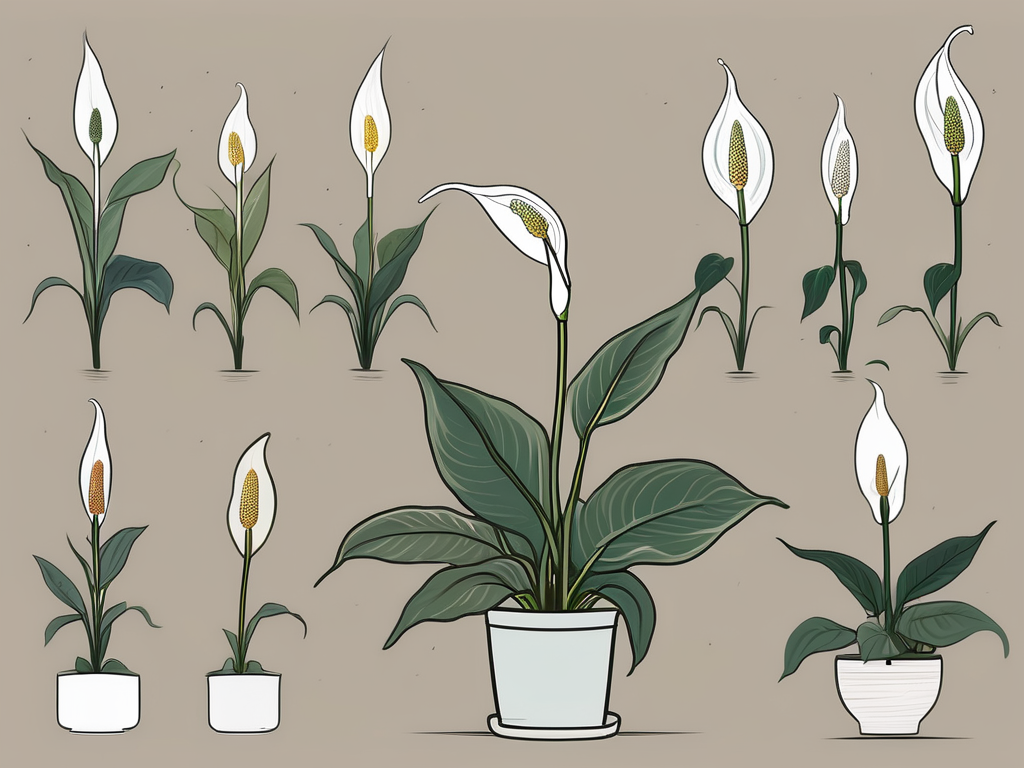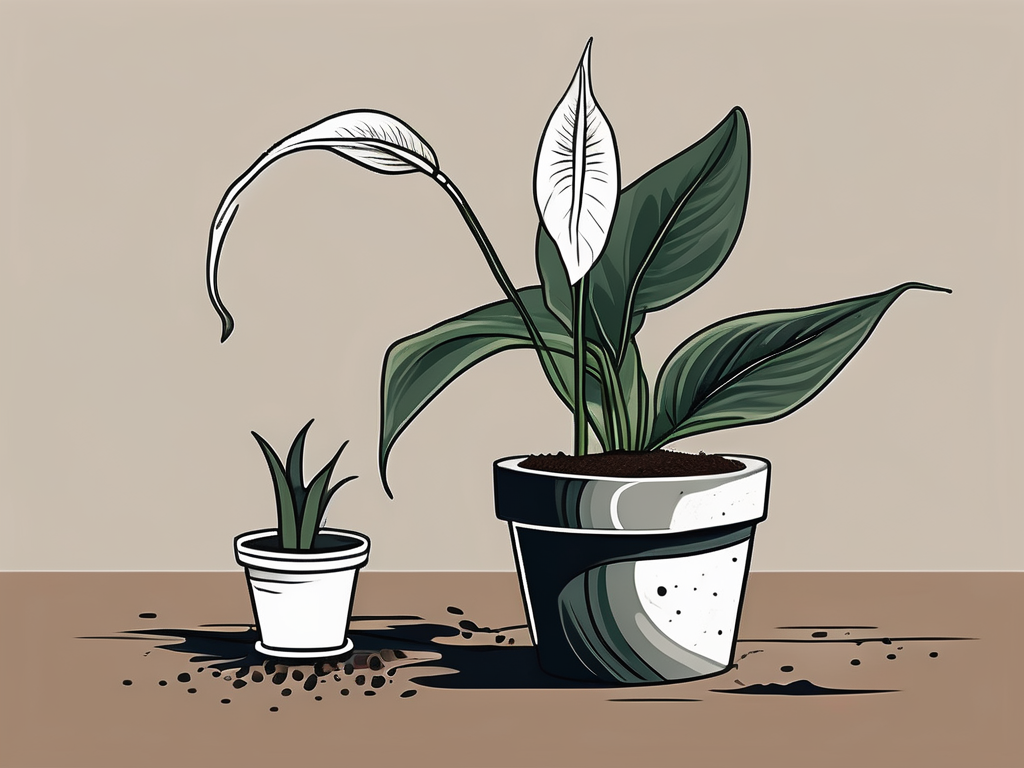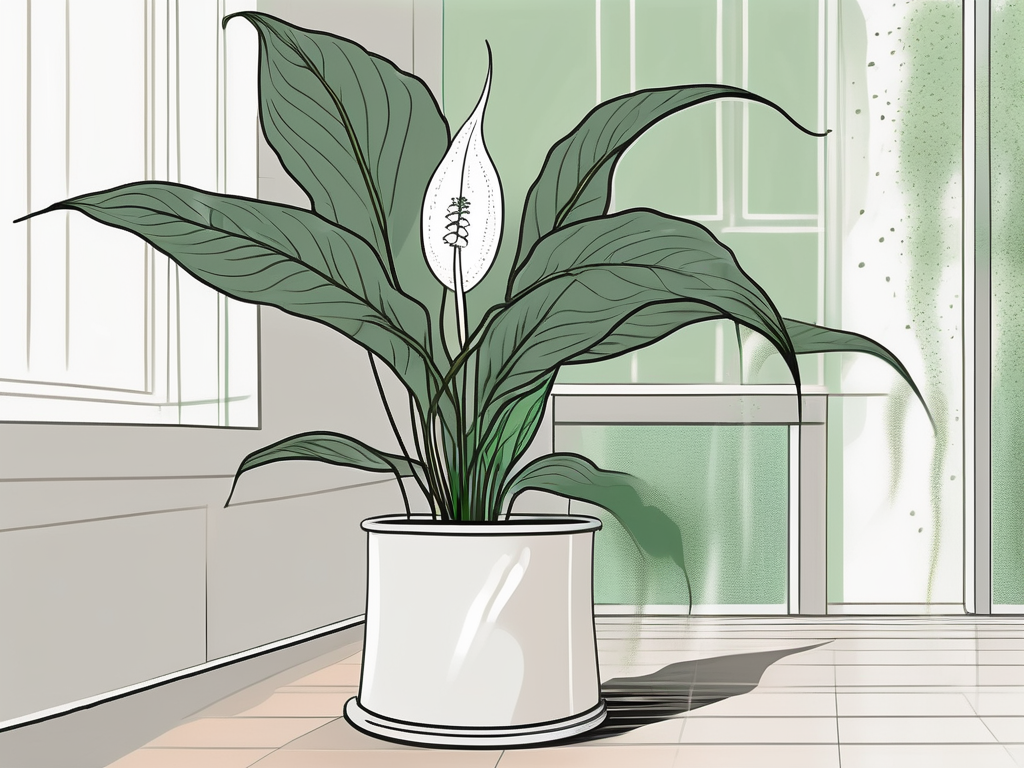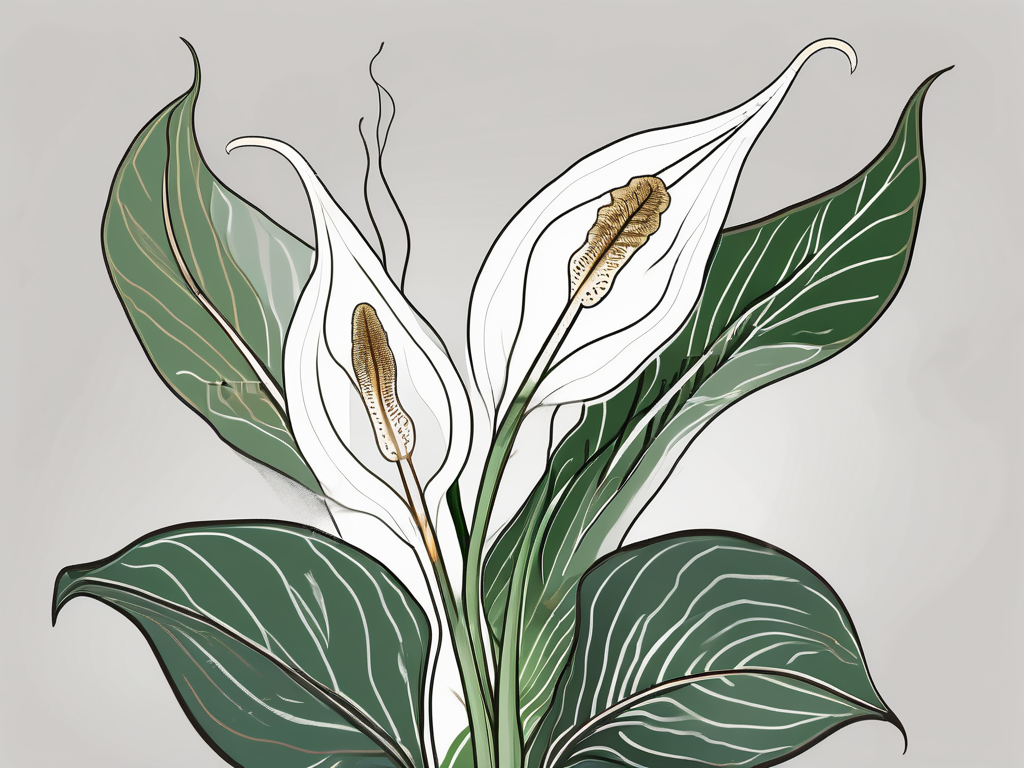
Picture this: a home filled with lush, vibrant greenery that not only adds beauty but also a fresh touch of nature to your space. If you're a fan of houseplants, you've probably come across the peace lily, a beloved favorite among plant parents. Known for its glossy, dark green leaves and stunning white blooms, the peace lily is as elegant as it is easy to care for.
In this guide, we're going to chat about everything you need to know to keep your peace lily thriving. We'll cover topics like light, water, soil, and even a bit about pests and diseases. Whether you're a seasoned plant lover or just beginning your journey into the wonderful world of indoor gardening, there's something here for everyone. So, grab a cup of tea, get comfy, and let's dive into the wonderful world of peace lily care.
Choosing the Right Peace Lily
Before you bring a peace lily into your home, it's crucial to choose the right one. You'll want a plant that's healthy from the get-go, giving you the best chance for success. So, how do you pick the perfect peace lily? Here's a simple checklist to guide you:
- Check the leaves: Look for vibrant, deep green leaves. Avoid plants with yellowing or browning leaves, as this could indicate poor health or stress.
- Inspect the blooms: Healthy peace lilies should have bright white flowers. If the blooms are greenish, it may mean the plant has been over-fertilized.
- Look at the soil: Make sure the soil is moist but not waterlogged. Overly dry or soggy soil could signal improper care.
- Examine the roots: If possible, gently check the roots by tipping the plant out of its pot. Healthy roots should be white or light brown and free of any mushy or rotten spots.
Once you've picked a healthy peace lily, you're all set to bring it home and introduce it to its new environment.
Finding the Perfect Spot
One of the peace lily's best features is its adaptability to various lighting conditions, which makes it a fantastic choice for different rooms in your home. However, to keep your peace lily happy, it's important to find the right spot.
Light requirements: Peace lilies thrive in bright, indirect light. A room with plenty of filtered sunlight is ideal. While they can tolerate low light conditions, they may not bloom as frequently without enough light. On the other hand, direct sunlight can scorch their leaves, so avoid placing them in spots where the sun's rays are too strong.
Temperature and humidity: Peace lilies prefer temperatures between 65-80°F (18-27°C). They also love humidity, so consider placing them in a bathroom or kitchen where moisture levels are higher. If your home is on the dry side, you can use a humidifier or occasionally mist the leaves to keep the plant comfortable.
Once you've found the perfect spot for your peace lily, it will be ready to settle in and start growing beautifully.
Watering Wisely
When it comes to watering peace lilies, balance is key. Too much water can lead to root rot, while too little can cause the leaves to droop and yellow. Here's a simple routine to keep your peace lily well-watered:
- Check the soil moisture: Before watering, stick your finger about an inch into the soil. If it feels dry, it's time to water. If it's still moist, wait a few more days and check again.
- Watering method: Water your peace lily thoroughly until you see water draining out of the bottom of the pot. This ensures the entire root ball is hydrated.
- Frequency: Peace lilies generally need watering once a week, but this can vary depending on the season, humidity, and temperature in your home.
Remember, peace lilies are pretty communicative plants. If the leaves start drooping, it’s usually a sign they’re thirsty. A quick drink will perk them right up!
Picking the Right Soil and Pot
The soil and pot you choose can make a significant difference in how well your peace lily grows. Here are some tips to help you make the right choices:
Soil type: Peace lilies prefer a well-draining potting mix, rich in organic matter. A standard houseplant potting soil mixed with some perlite or orchid bark works well. This ensures the soil retains enough moisture while allowing excess water to drain away.
Pot choice: When it comes to pots, drainage is crucial. Make sure your pot has drainage holes to prevent water from sitting at the bottom, which can lead to root rot. A pot that’s one size larger than the root ball gives your peace lily room to grow without being too large.
By setting up your peace lily with the right soil and pot, you’re giving it a solid foundation for healthy growth.
Feeding Your Peace Lily
Feeding your peace lily helps it maintain vibrant leaves and encourages blooming. However, it's important to feed in moderation to avoid over-fertilization, which can harm the plant.
Fertilizer type: Use a balanced, water-soluble houseplant fertilizer. A 20-20-20 or 10-10-10 fertilizer works well for peace lilies.
Feeding schedule: Feed your peace lily about every 6-8 weeks during the growing season (spring and summer). In the fall and winter, reduce feeding, as the plant's growth slows down.
Over-fertilization can cause the leaves to turn brown or yellow, so it's better to err on the side of caution and feed sparingly.
Pruning and Grooming
While peace lilies are relatively low-maintenance, they do benefit from a little grooming now and then to keep them looking their best.
Pruning: Trim away any yellowed, browned, or wilted leaves to keep your peace lily healthy and tidy. Use clean, sharp scissors or pruning shears to make clean cuts at the base of the leaf stem.
Cleaning the leaves: Dust can accumulate on the broad leaves, which can interfere with photosynthesis. Wipe the leaves gently with a damp cloth every few weeks to keep them clean and shiny.
Regular grooming not only keeps your peace lily looking great but also helps prevent pests and diseases.
Dealing with Pests and Diseases
Peace lilies are generally hardy plants, but they can occasionally fall victim to pests and diseases. Here’s how to keep your plant healthy and pest-free:
Common pests: Keep an eye out for spider mites, aphids, and mealybugs. If you notice any, you can remove them by wiping the leaves with a solution of water and mild dish soap or use an insecticidal soap.
Diseases: Fungal diseases like root rot can occur if the plant is overwatered. Ensure proper drainage and avoid letting the plant sit in standing water to prevent this issue.
By keeping your peace lily’s environment clean and monitoring for pests and diseases, you can help it stay healthy and happy.
Encouraging Blooming
While peace lilies are admired for their lush foliage, their stunning white blooms are a beautiful bonus. If your plant isn’t blooming, here are a few tips to encourage those lovely flowers:
- Ensure proper light: While peace lilies can tolerate low light, they bloom best in bright, indirect light.
- Regular feeding: Providing the right nutrients during the growing season can promote blooming.
- Temperature and humidity: Maintain a stable temperature and humidity level to mimic their natural tropical environment.
With a little patience and care, your peace lily will reward you with its beautiful white flowers.
Repotting Your Peace Lily
Like all houseplants, peace lilies eventually outgrow their pots and need repotting to continue thriving. Here's how to repot your peace lily:
When to repot: If you notice roots growing out of the drainage holes or the plant seems cramped, it's time to repot. Typically, peace lilies need repotting every 1-2 years.
Steps for repotting:
- Choose a pot that's 1-2 inches larger in diameter than the current pot.
- Fill the new pot with fresh potting soil, leaving space for the root ball.
- Gently remove the peace lily from its old pot, being careful not to damage the roots.
- Place the plant in the new pot and fill in the sides with more potting soil.
- Water thoroughly to help the plant settle into its new home.
Repotting not only gives your plant room to grow but also refreshes the soil, providing essential nutrients.
Final Thoughts
Peace lilies are a fantastic choice for anyone looking to add a touch of green to their home. By choosing a healthy plant, providing the right light and water, and keeping an eye out for pests and diseases, you can enjoy a beautiful, thriving peace lily for years to come.
At Cafe Planta, we love helping you connect with nature through your houseplants. Whether you're looking for a new plant, accessories, or even plant-themed apparel, we’re here to help. Feel free to reach out via email or Instagram if you have any questions. We believe plants have the power to bring people together and inspire us all.













